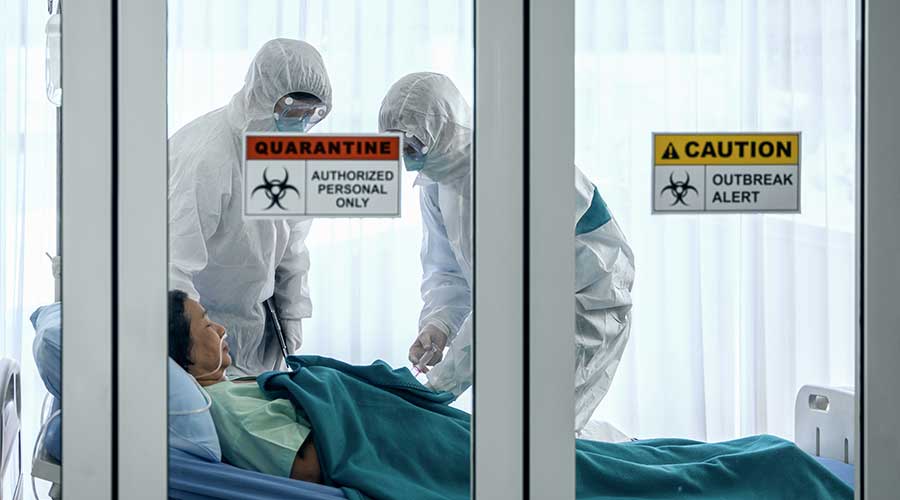The monkeypox virus can be shed into the surrounding environment by infected people, specifically from infected skin particles caused by skin lesions, according to a new study.
Current recommendations advise patients with severe monkeypox requiring hospitalization should be cared for in isolation rooms with infection control measures in place. But it remains unclear whether infection prevention methods are proportionate to the potential virus exposure risks. To explore this, British researchers studied samples from hospitalized patients.
The researchers assessed monkeypox virus shedding onto surfaces in specialized isolation rooms and whether the virus was detectable in air samples from the rooms. They found viral DNA shed by the patients on multiple surfaces throughout the isolation rooms (56 positives by PCR out of 60 samples). Monkeypox virus DNA was found on the personal protective equipment (PPE) worn by the healthcare workers caring for the patients and in the anterooms where they removed their PPE. It was also detected in five out of 20 air samples taken in these isolation rooms.

 Building Sustainable Healthcare for an Aging Population
Building Sustainable Healthcare for an Aging Population Froedtert ThedaCare Announces Opening of ThedaCare Medical Center-Oshkosh
Froedtert ThedaCare Announces Opening of ThedaCare Medical Center-Oshkosh Touchmark Acquires The Hacienda at Georgetown Senior Living Facility
Touchmark Acquires The Hacienda at Georgetown Senior Living Facility Contaminants Under Foot: A Closer Look at Patient Room Floors
Contaminants Under Foot: A Closer Look at Patient Room Floors Power Outages Largely Driven by Extreme Weather Events
Power Outages Largely Driven by Extreme Weather Events